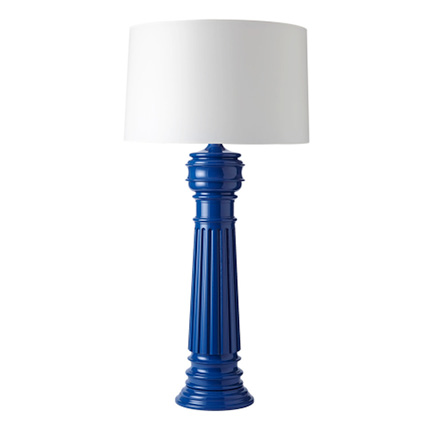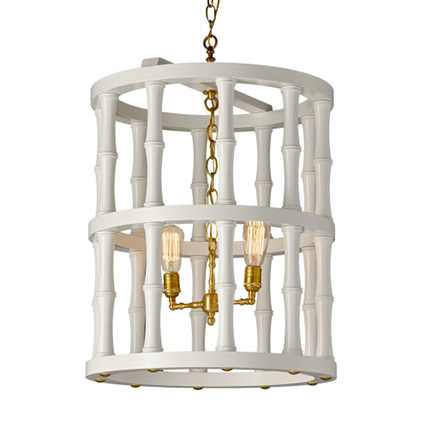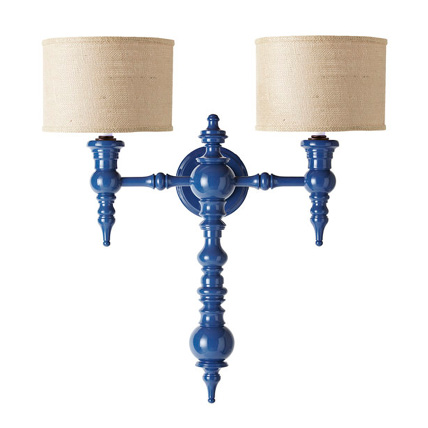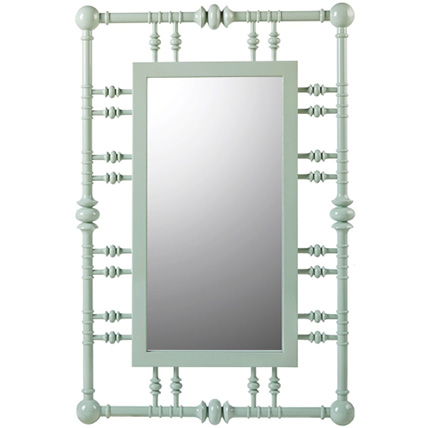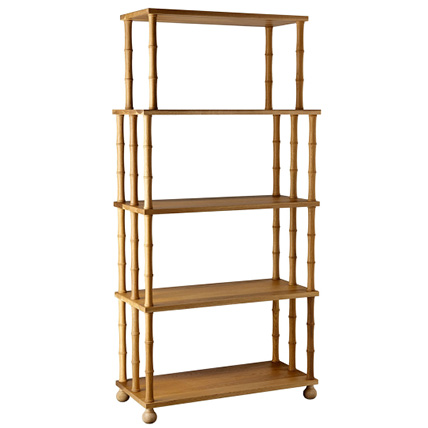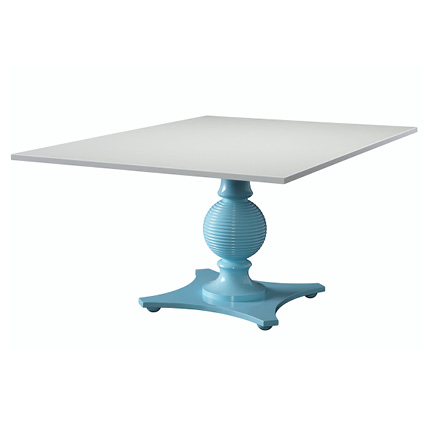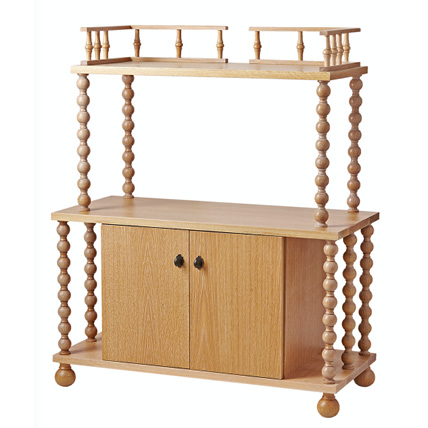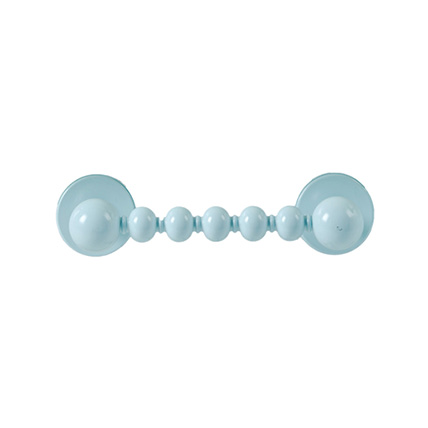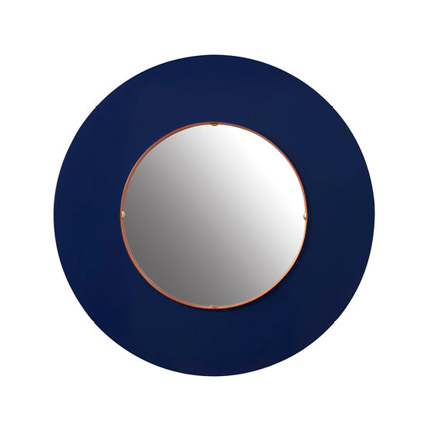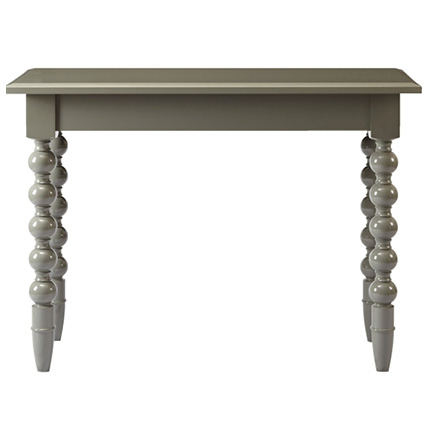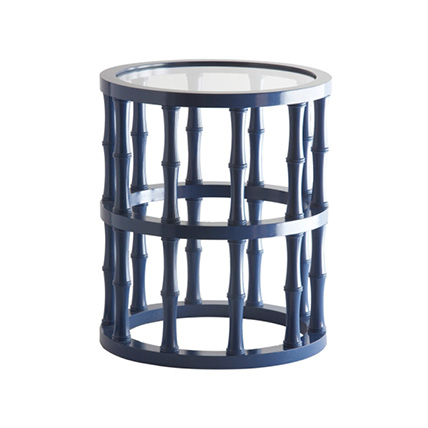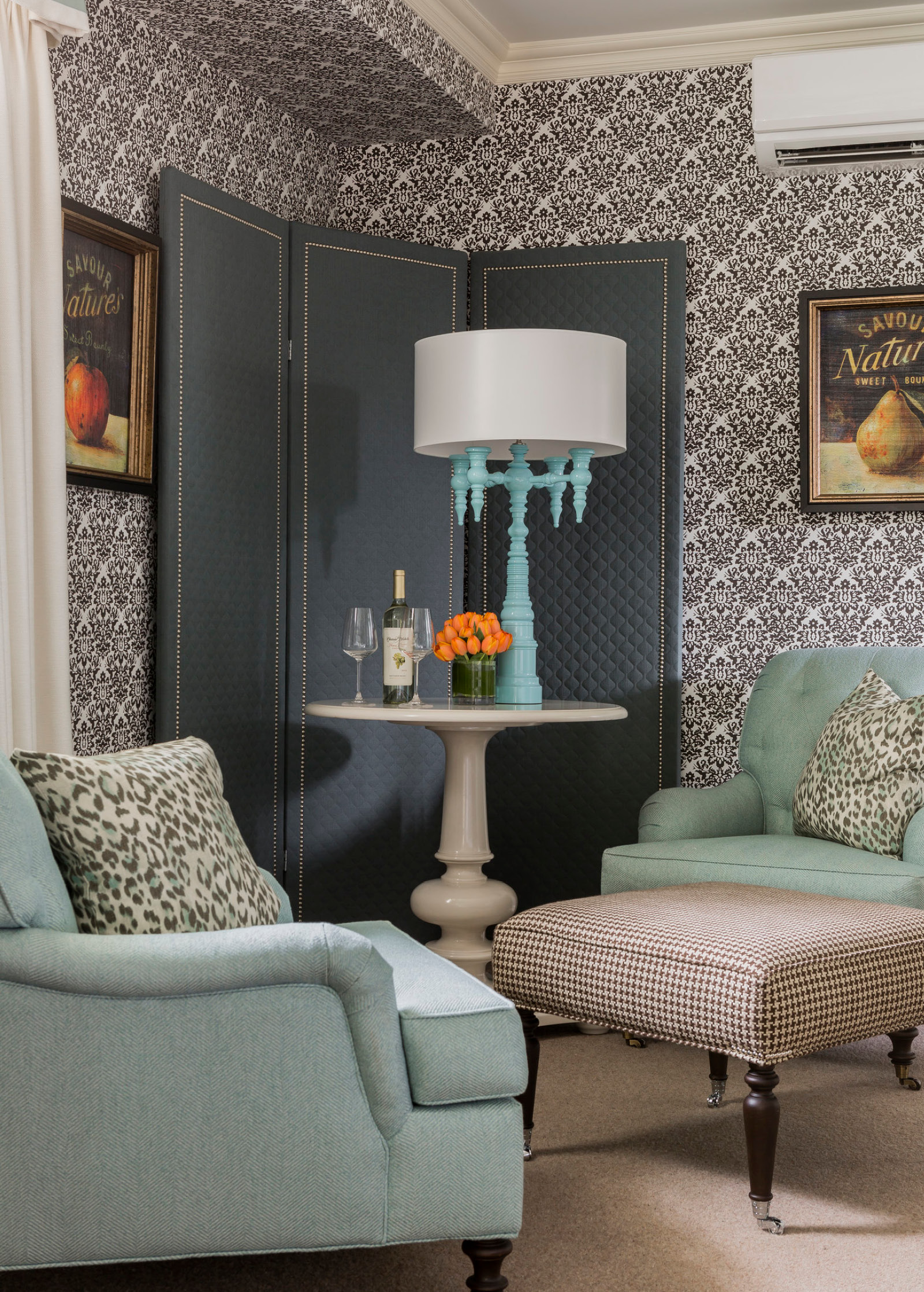
Life takes twists and turns for so many of us. It did for Stacy Kunstel and Michael Partenio. They pivoted from their career roles to launch furniture company Dunes and Duchess. He’s a photographer. She’s a stylist and regional scout for the design industry’s most notable magazine titles. Together they created a boutique collection of furniture and lighting identified by its lacquered turned-wood forms that marry the aesthetics of antique and modern.
As a designer with a strong affinity for bold color, I’m especially excited when I can use one of Dunes and Duchess’ custom pieces in my projects. If you don’t know this company, check them out. In the meantime, here’s my interview with Stacy.
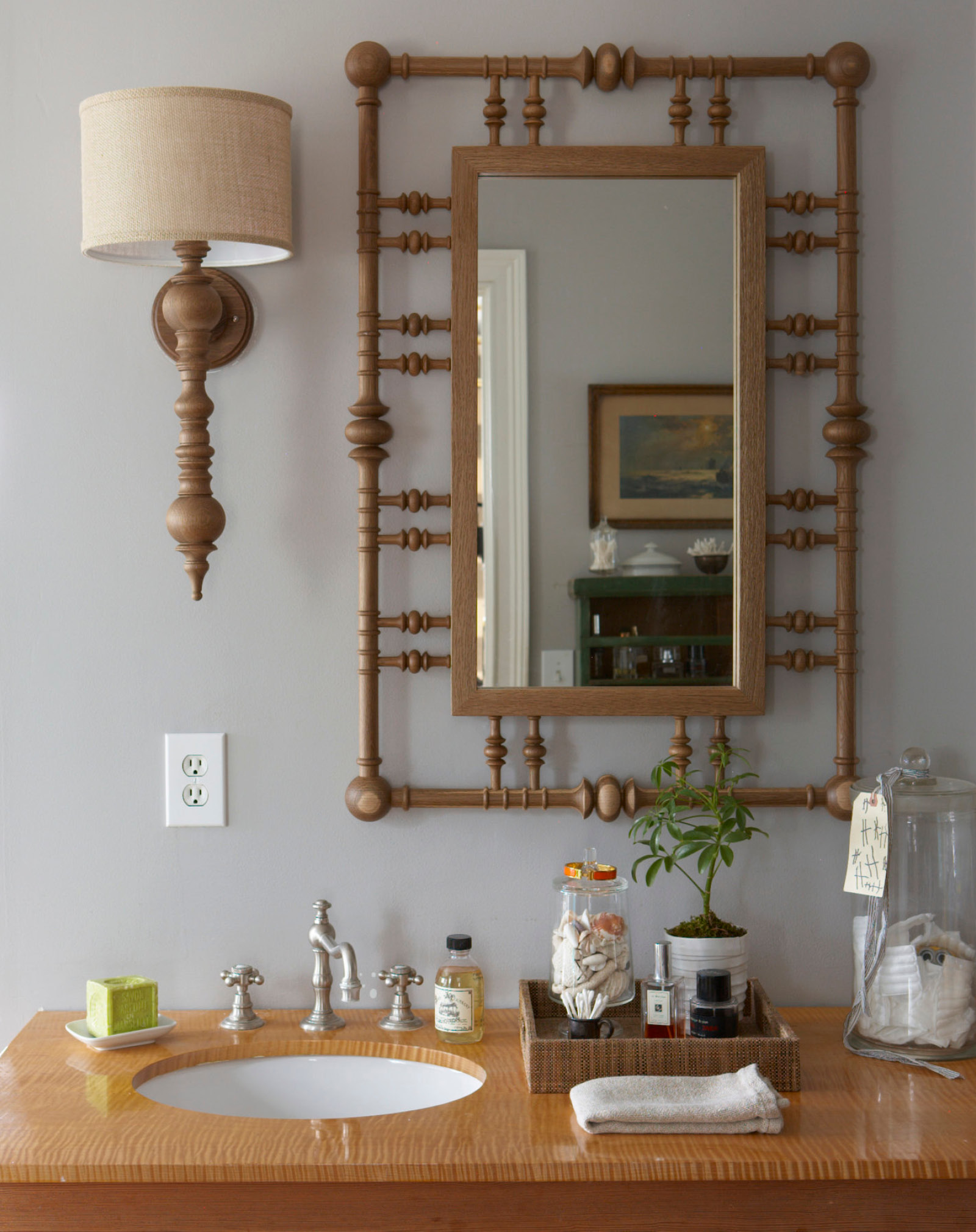
You’ve mentioned that Dunes and Duchess started as a way for Michael to charm you. I love a love story that starts with furniture. Details, please!
Michael and I met while we were assigned to work on the same photoshoot. At one point, we were on a shoot in Florida and spotted a candelabra that we thought was beautiful. When we returned to Connecticut where we live, Michael said that he was going to make me that candelabra and visited his wood-turner friend to produce it. Some girls get jewelry, and I received a new version of that candelabra turned in wood.
Now that’s a dating and love story that you don’t hear every day. It sounds like your relationship had no trouble blooming. What about the furniture company?
We started the business in August 2010, but it wasn’t much for the first three years. Other designers saw the candelabra and started to request them for their own clients. Then they asked that the base be turned into a lamp. Several people suggested that we set up a booth at a gift show. We landed at the New York Gift Show with a small 8 x 8-foot booth and only two products and three colors to show. Barney’s was one of our first buyers, and at that point, we realized we had to figure out how to do this.
For such a young company, the turned-wood silhouettes and those bold colors have made your products so recognizable and, I’ll even say, iconic at this point. How does that feel?
I’m blown away that you are describing Dunes and Duchess with the word “iconic.” Producing photo shoots has influenced us more than anything else. In a photo shoot you think perfection in that moment. You are also looking at a photo from negative space and positive space. When we started with the candelabra, it didn’t make sense to produce all this product that didn’t relate to that one piece that started it all. That’s how we approach designing each new piece. We hit a really good note like a piece of jazz music. Everything after that is its own thing, but it harmonizes with that note over and over again. There’s plenty of differentiation between each shape and the color and finish that’s selected. So even if a customer has multiple pieces of ours, it doesn’t feel thematic.

When you make something that is so recognizable and specific, it won’t resonate with some people. How do you address those customers who don’t identify with your style?
To be honest, even I didn’t identify with our look early on. Just like any company, we aren’t for everyone. The candelabra for instance, is very specific. But then there are pieces like our dining tables, which do really well for us. They have a more universal appeal. And of course, every piece takes on its own personality with color and finish choices. I look at our offerings much like I do fashion. There are days when you dress to be seen. That’s our candelabra. Then there are days when you dress to fit in. That’s when our sconces and tables come into play. But in the end, so much is dependent on the colors and finishes.
Let’s talk color. It is such a hallmark of Dunes and Duchess pieces in slick, shiny finishes. What has surprised you about color and its power?
I didn’t realize how color makes me so happy. I have a physical response to it. I’ve always thought of myself as a white, beige, and brown girl. But when I see a finished piece in a bright blue or pink, I get so much joy imagining where it’s going. We offer 19 standard colors, and it’s intriguing to see those colors live together very happily. What’s so great about both our style and our colors is that it can be a perfect accent for the person who wants everything clean and neutral. Chances are, they are going to have a powder room that they want to take a dramatic design turn. Adding our pieces in a shocking color can offset a basic foundation. Oddly enough, we do a lot of limed oak, white, and blue, but very little black. When clients specify our pieces, they naturally want them to have a little finish interest.

So many of your pieces have lots of curves and turns; others that temper those curves. Which do you prefer?
Funny that you ask. Michael and I come to the table with different preferences for our silhouettes. Michael is a guy who likes curves. When I design, the pieces tend to be straighter with cleaner lines. You can tell the pieces that each of us has influence over. Mine are more edited. But everything is meant to be sculptural. When we figured out that we could produce sconces, we were excited. Most sconces on the market came in nickel or brass finishes. Beautiful, but they don’t offer the same warmth as wood does, even when it’s painted. I wanted something colorful and sculptural that could be placed on the walls. But we couldn’t do any of this without designers pushing us to produce pieces that weren’t originally in our wheelhouse.
There’s so much focus on the Makers Movement, where customers are vested in the stories of pieces they are buying. As a boutique and bespoke company, are you experiencing that same level of interest?
We absolutely are. Clients love buying a piece that tells a story. The reason I dropped out of architecture school is because I wanted to talk about design; I didn’t want to draw it. Just last weekend, a young, newly married couple came here to pick their table. They wanted to see where their piece was being made. I understand their interest. When I walk around my own house, I know where everything originates. I love giving shop tours on Instagram so people feel like they are a part of our experience.
Part of your story includes the label “Made in America.” Why is that important to you?
Materials and where they come from have been a top priority to us from the beginning. First, we use real wood sourced on the East Coast. We work with small independents to source lighting parts and anything else that we need. Our upholsterer is 2 miles from our shop. When we are dealing with sources from our supply chain, we get into our car to speak with them face to face. When we launched the business, I told Michael that I only wanted to go overseas to vacation not to work. I’ve never been surer of that decision than since the COVID crisis. Our business has been saved because we are 100 percent domestic.
Quality is a key factor for Dunes and Duchess. That, of course, means your pieces can be handed down for generations, making them heirlooms. With that level of quality comes an elevated price tag. Why is investing in quality important?
When I walk around our own house and look at the origin of what we own, most of our things are antique, from our families, or things that we’ve made. Having grown up with a strong European influence as a kid, I was taught to buy the best you can and buy it once. By following that guideline, you were, in fact, saving money. It’s important for me to really love what I’m buying and not acquire things that I’m going to throw away. That way of thinking is socially responsible, too, with less environmental impact. I laugh when I think about something that Michael said early on, that he wanted to make pieces that people will fight over in probate. That certainly speaks to the quality that we aim to achieve. We want our pieces to outlive us for generations.
Not only do you have a commitment to the construction of what you make, you have a commitment to service as well. Why?
We want everyone to be invested in their piece as much as we are. We understand that our pieces might be out of range for some people, so we work with them to find something that they can afford from our collection, and we can always adjust and enhance at a later time. I think of a young couple who recently bought a dining table for their apartment in Boston. I told them that if they ever moved into a larger home and need to change the color, add a different top, or cut it down to be lower, we can do that. We take responsibility for each piece so that it can transition into what a client needs instead of being a piece that they need to get rid of.
One woman who we worked with recently couldn’t afford to do a big table with a big top. We made a glass top for her base, and after she saves for a wood top, we will replace it for her. We want each customer to get as much as they can from our work. We change the color of the wall sconces fairly often when people move to a new home and want to see their pieces refreshed. It’s a fun process for us. Just as, hopefully, our pieces will live through many generations, we want them to also live through many chapters within any single generation.
What has been the greatest part of this 10-year ride of Dunes and Duchess?
I love that we’ve become this piece of design that people aspire to have make their living arrangement more beautiful and joyful. We are thrilled when our customers show such a strong interest in who made their piece and where it was made. It connects them to us. It’s like we have guardian angels who are encouraging us all of the time. And that makes us feel great. The connections to the people, that’s what has made starting this company worth the effort.
Find the joy for yourself. Connect with the sculptural curves and vivid finish colors of Dunes and Duchess products.


